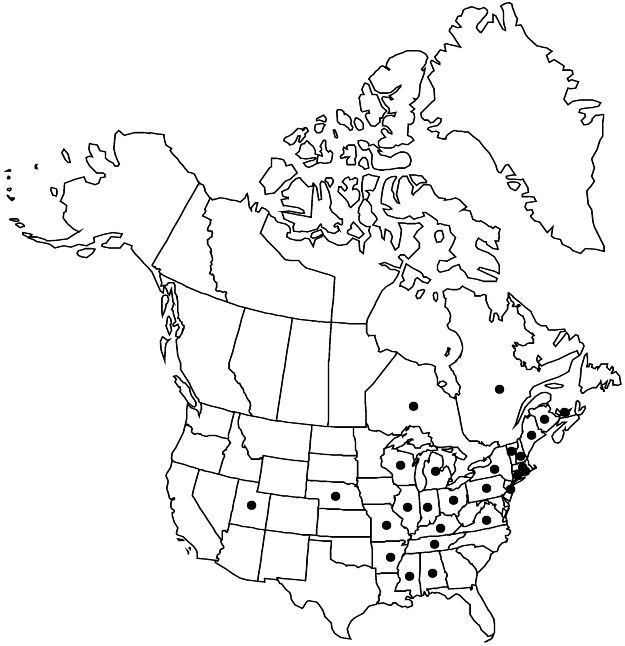Euonymus europaeus
Sp. Pl. 1: 197. 1753. (as Evonymus)
Shrubs or trees 2–10 m. Stems erect; young branches terete, not corky winged. Leaves deciduous; petiole 4–12 mm; blade ovate-elliptic, 2.5–10 × 1.5–3.5 cm, base attenuate to broadly cuneate, margins minutely denticulate, apex acuminate. Inflorescences axillary, 1–7(–15)-flowered. Flowers: sepals 4; petals 4, yellow or white, oblong, 3–4 × 1–2 mm; stamens 4; ovary smooth. Capsules pink, obovoid, 8–10 × 12–15 mm, deeply (2–)4-lobed, rarely only 1 lobe developing, lobes clearly connate, surface smooth. Seeds obovoid, 7–8 × 4–5 mm; aril orange or yellow.
Phenology: Flowering spring–summer; fruiting summer–fall.
Habitat: Roadsides, thickets, woodlands.
Elevation: 0–300 m.
Distribution

Introduced; N.B., Ont., P.E.I., Que., Ala., Ark., Conn., Ill., Ind., Ky., Maine, Mass., Mich., Miss., Mo., Nebr., N.H., N.J., N.Y., Ohio, Pa., R.I., Tenn., Utah, Vt., Va., Wis., Europe.
Discussion
The leaves of Euonymus europaeus vary greatly in shape and size, especially in cultivated plants. The species was introduced to the flora area as a garden ornamental.
Selected References
None.